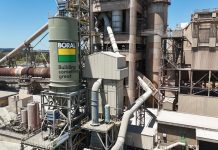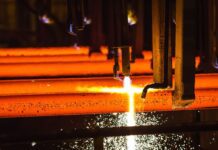
Leading construction materials company Boral, in collaboration with industry players and researchers, is embarking on a project to develop a lower carbon concrete product utilising Australian calcined clay as an alternative supplementary cementitious material (SCM).
This innovative solution seeks to maintain the supply of Boral’s lower carbon concrete offerings amidst the declining global availability of blast furnace slag and fly ash, the company said in a news release.
According to Boral, the abundance of clay in Australia presents a viable alternative, supporting the decarbonisation of the nation’s buildings and infrastructure.
Boral has partnered with the University of Technology Sydney (UTS), Transport for NSW, and environmental technology company Calix for this project, which is supported by SmartCrete CRC.
This independent cooperative research centre (CRC) unites industry, research, and government to ensure the viability of Australia’s concrete infrastructure.
The two-year initiative, co-funded by the Commonwealth’s CRC Program, aims to further demonstrate the technical feasibility of calcined clay concrete for use in Australian construction.
Project partners, including suppliers, university researchers, asset owners, and providers, will engage in accelerated lab testing and field trials during the validation stage.
A milestone has already been achieved, with the successful calcination of the first batch of Boral clay using Calix’s renewably powered electric calcination technology.
This demonstrates the potential to produce a low carbon intensity SCM.
This project builds on three years of extensive research at the UTS Boral Centre for Sustainable Building, where the suitability of various Australian clay sources was identified.
Vik Bansal, CEO and Managing Director at Boral, emphasised the company’s commitment to a sustainable future.
He noted, “Boral is committed to a lower carbon future and we never stand still. We are continuously improving and diversifying our lower carbon concrete offering by identifying new ways to reduce the cementitious intensity of our products.”
He added, “The strong demand and take-up of our lower carbon concrete range can be seen across many major Australian buildings and construction projects which use our Envisia and Envirocrete products. We are excited about the next generation of work being done in lower carbon concrete and Boral’s ability to support the decarbonisation of Australia’s building and infrastructure for many years to come.”
Dr Ali Nezhad, head of Sustainability and Innovation at Boral and project lead, remarked, “It’s an exciting time to be at the forefront of the research and development being done on lower carbon concrete. The industry is constantly looking for ways to innovate, push the boundaries and find ways to be more sustainable. Given the abundance of clay in Australia, using Australian calcined clay was a natural decision for us.”
He continued, “We have been impressed with the work done to date and initial testing in this project is promising. We look forward to the building and construction industry in Australia embracing these new innovations.”



















